B. Scott Gaudi
A Ubiquitous Unifying Degeneracy in 2-body Microlensing Systems
Nov 26, 2021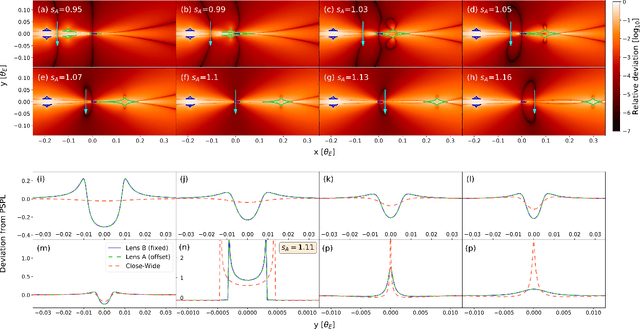
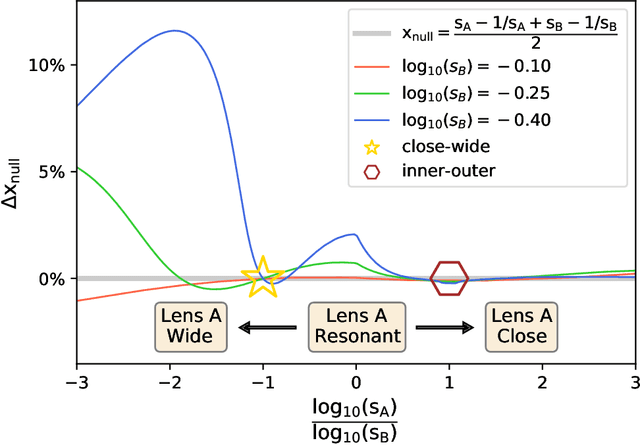
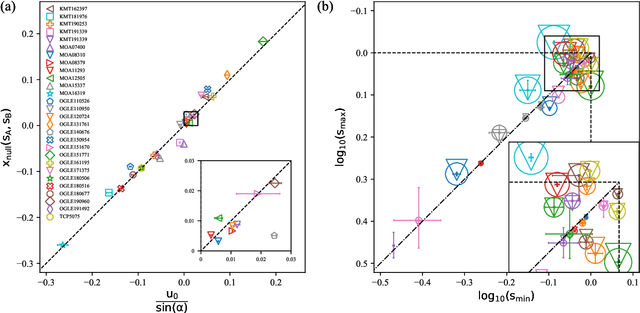
Abstract:While gravitational microlensing by planetary systems can provide unique vistas on the properties of exoplanets, observations of such 2-body microlensing events can often be explained with multiple and distinct physical configurations, so-called model degeneracies. An understanding of the intrinsic and exogenous origins of different classes of degeneracy provides a foundation for phenomenological interpretation. Here, leveraging a fast machine-learning based inference framework, we present the discovery of a new regime of degeneracy--the offset degeneracy--which unifies the previously known close-wide and inner-outer degeneracies, generalises to resonant caustics, and upon reanalysis, is ubiquitous in previously published planetary events with 2-fold degenerate solutions. Importantly, our discovery suggests that the commonly reported close-wide degeneracy essentially never arises in actual events and should, instead, be more suitably viewed as a transition point of the offset degeneracy. While previous studies of microlensing degeneracies are largely studies of degenerate caustics, our discovery demonstrates that degenerate caustics do not necessarily result in degenerate events, which for the latter it is more relevant to study magnifications at the location of the source. This discovery fundamentally changes the way in which degeneracies in planetary microlensing events should be interpreted, suggests a deeper symmetry in the mathematics of 2-body lenses than has previously been recognised, and will increasingly manifest itself in data from new generations of microlensing surveys.
Real-Time Likelihood-Free Inference of Roman Binary Microlensing Events with Amortized Neural Posterior Estimation
Feb 17, 2021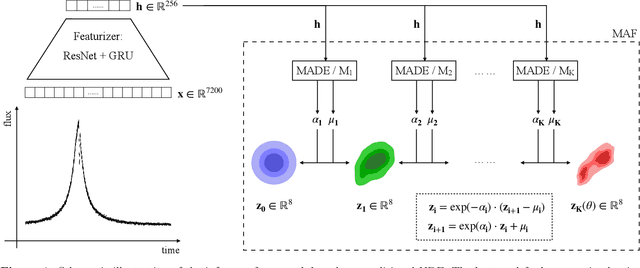
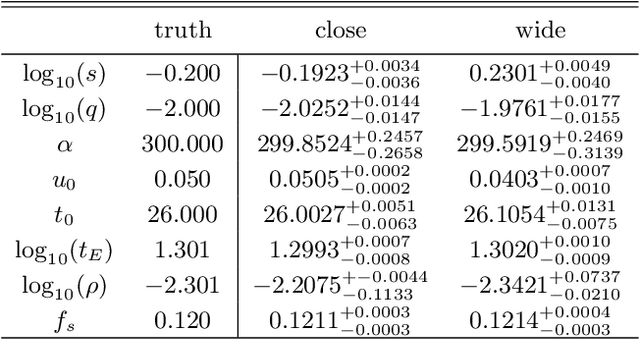
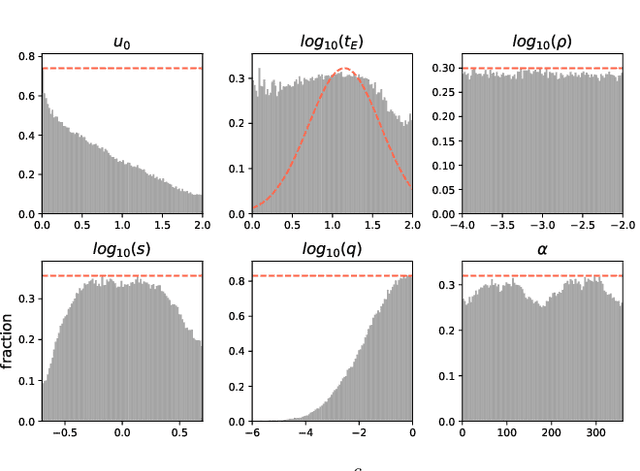
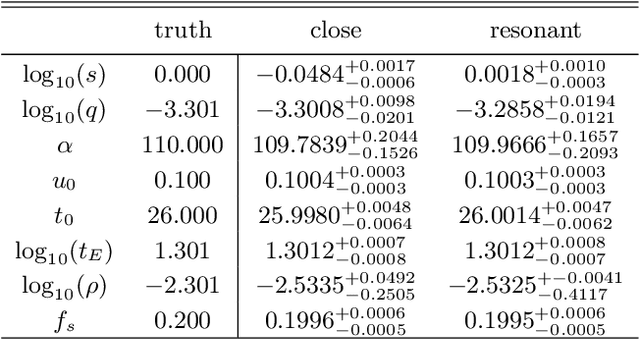
Abstract:Fast and automated inference of binary-lens, single-source (2L1S) microlensing events with sampling-based Bayesian algorithms (e.g., Markov Chain Monte Carlo; MCMC) is challenged on two fronts: high computational cost of likelihood evaluations with microlensing simulation codes, and a pathological parameter space where the negative-log-likelihood surface can contain a multitude of local minima that are narrow and deep. Analysis of 2L1S events usually involves grid searches over some parameters to locate approximate solutions as a prerequisite to posterior sampling, an expensive process that often requires human-in-the-loop domain expertise. As the next-generation, space-based microlensing survey with the Roman Space Telescope is expected to yield thousands of binary microlensing events, a new fast and automated method is desirable. Here, we present a likelihood-free inference (LFI) approach named amortized neural posterior estimation, where a neural density estimator (NDE) learns a surrogate posterior $\hat{p}(\theta|x)$ as an observation-parametrized conditional probability distribution, from pre-computed simulations over the full prior space. Trained on 291,012 simulated Roman-like 2L1S simulations, the NDE produces accurate and precise posteriors within seconds for any observation within the prior support without requiring a domain expert in the loop, thus allowing for real-time and automated inference. We show that the NDE also captures expected posterior degeneracies. The NDE posterior could then be refined into the exact posterior with a downstream MCMC sampler with minimal burn-in steps.
Automating Inference of Binary Microlensing Events with Neural Density Estimation
Oct 08, 2020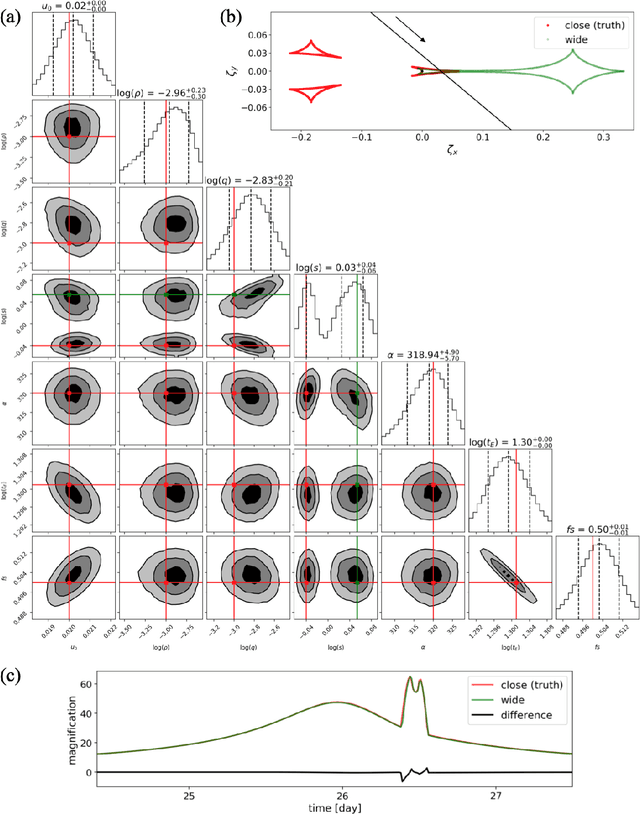
Abstract:Automated inference of binary microlensing events with traditional sampling-based algorithms such as MCMC has been hampered by the slowness of the physical forward model and the pathological likelihood surface. Current analysis of such events requires both expert knowledge and large-scale grid searches to locate the approximate solution as a prerequisite to MCMC posterior sampling. As the next generation, space-based microlensing survey with the Roman Space Observatory is expected to yield thousands of binary microlensing events, a new scalable and automated approach is desired. Here, we present an automated inference method based on neural density estimation (NDE). We show that the NDE trained on simulated Roman data not only produces fast, accurate, and precise posteriors but also captures expected posterior degeneracies. A hybrid NDE-MCMC framework can further be applied to produce the exact posterior.
 Add to Chrome
Add to Chrome Add to Firefox
Add to Firefox Add to Edge
Add to Edge